Costus speciosus / Crepe ginger /কেঁউ / কেমুক / কেতকী।
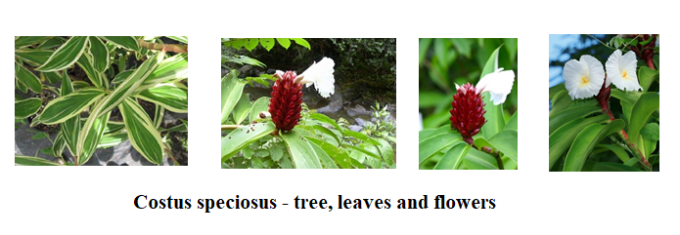
General features: It is a perennial rhizomatous succulent flowering plant belonging to Costaceae / Zingiberaceae family. It has been placed in the genus of ‘Costus’ by the famed Swedish botanist Karl Linnaeus in 1753. The name Costus speciosus was actually offered by him. Prior to this naming, it was recognized as Hellenia following the name of Finnish botanist Karl Nicolas von Hellens. The plant has the uncanny similarity with ginger (Zingiber) in its appearance except having a row of spiral leaves in its frame. In English it is named Costus speciosus (C speciosus) or Crepe ginger. In Hindi it is known as Keukand whereas in Bengali, it is called Keu` / Kemuk / Ketaki (কেঁউ / কেমুক / কেতকী). The plant is a native of South East Asia thus tends to grow in the warm tropical or sub-tropical climate. Besides India, Indonesia, China and adjoining areas, it also grows in Australia (Queensland), Mauritius, Fiji, Hawaii, Costa Rica, Belize, West Indies, Micronesia, Melanesia and New Guinea. In most Western countries, it is cultivated for the ornamental reason whereas in Southeast Asian nations it is grown for the medicinal and herbal needs due to its immense beneficial role on health. The herb grows nearly 9 ft high from the horizontally spread rhizomes which are covered with sheaths at the lower end. The leaves are thick elliptical or oblong or oblong- lanceolate and arranged spirally. They are 8 – 14 inches long and 2.5 – 4 inches wide having silky underneath. The flowers are large white cone with spiked terminal having red bracts with yellowish throat. The tiny fruits are globular and trigonous and red capsules and 0.5-inch diameter. The seeds are black with white aril. The flowering occurs just after the rainy season, starting from the month of October to end of December. The rhizomes are either straight or slightly curved and cylindrical, 4 – 15 inches in length with 1.5 – 2.5 inches diameter. The plant grows from the seeds dispersed by birds after eating the small fruits. It has been used in folk medicine for treating asthma, rheumatism, diabetes, hepatic disorders and many fungal diseases. The plant is extensively cultivated since 1920 at the high altitude of Himachal Pradesh, Kashmir and Uttarakhand, particularly in the northern hill states of India. It is considered as green gold becoming an important income source of the local farmers. In Northern India, it is known as Kuth roots. The state governments of those regions encourage its higher production output. There is a large demand for the Kuth oil. The herbal industries in India and abroad are the major consumers. The annual production in India is ~10,000 kilograms a year and a major portion of it is exported to Europe, Japan and Middle East countries. Since the oil is an expensive item so adulteration in most of the commercially available products is very common.
History: As per the history, C speciosus is known from the ancient times in many parts of the world especially within Indian subcontinent and Mediterranean regions. The dried roots were used as incense out of eleven ingredients of Saussuria, mentioned in the Hebrew religious book, Talmud. The Greeks and Romans used it as perfume and spice, which was also mentioned by the famous Greek philosopher and botanist Theophrastus in ~ 400 B.C. As per the further history, it has been revealed that the Hellenist King Seleucus Callinicus around 250 B.C. imported it from India as a gift to the Milesian King for medicinal use. The elder Pliny, the famous Roman scientist (23 – 79 AD) identified two varieties of Costus, white and black. The white variety is noticed to be more fragrant and named as Costus speciosus. Since then its dried root is used as incense. It is one of the common members of spice exported to the ancient Rome. In Arabic, it is called Qust which was used as a medicine at the time of Prophet Mohammed particularly during the post-menstrual wash for women. The oil extracted from dried roots after mixing with olive oil was applied to treat Alopecia and Chloasma (formation of dark coloration on skin). The root extract was traditionally used to treat toothache, headache, skin diseases like ring worm, asthma, dysentery and rheumatic problems. The legend tells that even the Prophet once said that “If someone’s child gets ‘Azra’ (meaning headache in ancient Arabic language) then mother should grind Qust in water and apply to the child”. In Islamic medicine C speciosus was frequently recommended to treat pharyngitis, tonsillitis among the children also curing pleurisy or to use as an antidote in case of snake bite. In Islamic world it is perhaps one of most effective folk medicines.
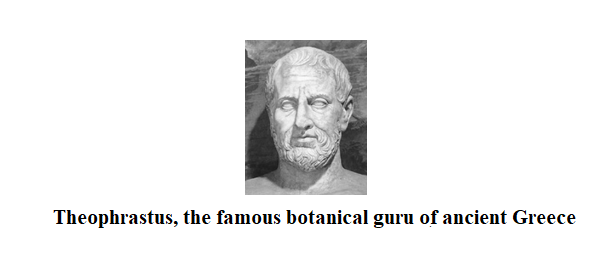
Traditional / folk uses: The rhizomes and roots are the most usable parts of this plant for major medicinal needs. They are bitter and astringent by taste. Experiences indicate that they have been traditionally in use for anthelmintic, febrifuge, depurative, purgative, expectorant, toxin removal, and aphrodisiac, tonic or stimulant purposes. The recent pharmacological studies make further addition to the list like anti-hyperglycemic, antifungal, antioxidant, anti-inflammatory, antibacterial, anti-cholinesterase action, diuretic, larvicidal, anti-stress and estrogenic. It also has anti-spasmodic and anti-fertility actions particularly those are grown in Indo-china or Indonesia. As a folk medicine practiced in many areas of the world, it has been further used to treat dropsy, pneumonia, jaundice, mental problems and urinary problems. Leaf prepared from leaves are commonly used as a febrifuge. It has several other identical roles like the rhizome. It is claimed to cure leprosy and possesses anti-vermin effect in addition to its anti-inflammatory, cardiotonic and anti-depressing role on CNS.
Use of Costas speciosus root oil: The oil extracted from C speciosus roots has light yellow or brownish color having weird smell. Although no detailed studies are performed but it shows several of its benefits. The oil has strong larvicidal role on mosquito larvae. In addition, it provides potent insecticidal effects. The compounds that are majorly responsible are Dehydro-costus lactone and Costunolide. These compounds either individually or as a mixture in root oil exhibit powerful anti-inflammatory actions. Studies further indicate that the oil also has potent anti-cancer action particularly on the breast cancer. Further, the oil offers calming effect during the stress, inhaling it during the child birth reduces pain and anxiety among women. Owing to its somewhat unpleasant odor it is mixed with the other pleasant smelling essential oils as flavoring agent for inhaling use.
Chemical constituents and biological role: The major identifiable phyto compounds synthesized within rhizomes and leaves are alkaloids, steroids, glycosides, phenolics, flavonoids, tannins and β – carotenes. The plant also reserves appreciable amount of fatty acids and oil especially in seeds and rhizomes. The composition is Palmitic – 56 %, Stearic – 8.5 %, Oleic – 23 %, Linoleic – 7 % and Arachidic – 2 %. The notable phyto-chemicals isolated from the plant are Diosgenin, β – sitosterol, Furostanol saponins, Saponins-costuscosides, β – D-glucoside, Prospagenins, Dioscin, Gracillin, Di-hydro-phytylplastoquinone and α – tocopherol quinone. A large varieties of steroids and saponins are found in the leaves, stems and rhizomes of C speciosus. The major constituents are Diosgenin. Its highest level is in the flower (1.21 %) and next is the stem (0.65 %) whereas the leaves have the least (0.37 %). The other steroidal constituents are Tigogenin, Dioscin, and Gracillin, Furastanol and β – Sitosterol and its glucosides.

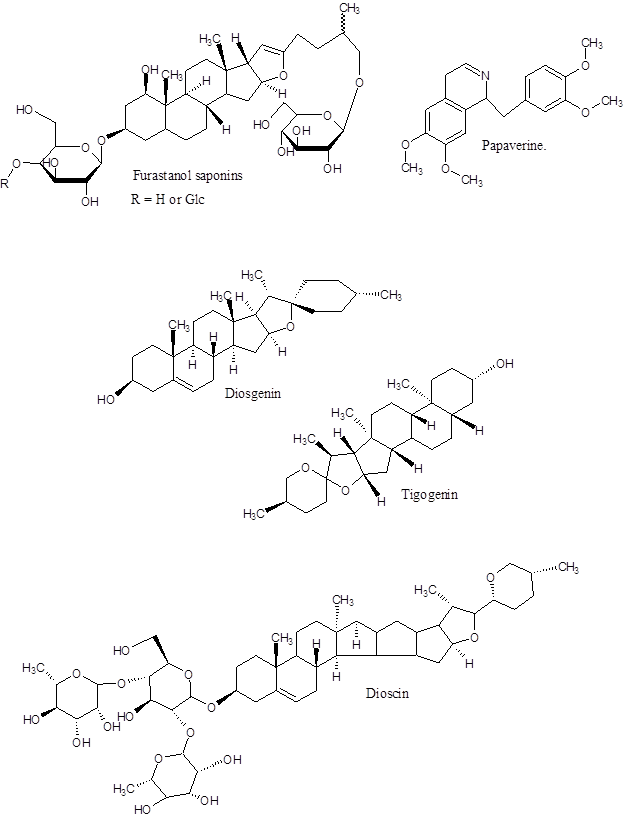
In addition to those, a large number of other bioactive phytochemicals are identified in the plant eg, β – amyrin, Camphene, Costunolide, α – Humelene, Lupeol and Zerumbone. The majority of them have anti-cancer / anti-proliferative properties when studied both in vivo and in vitro. For example, Diosgenin is a phyto-steroid that has anticancer, cardio-protective, anti-diabetic, neuro-protective, immune-modulatory, skin-protective, anti-inflammatory and estrogenic role. Additionally, it can also inhibit lipid peroxidation. Furastanol which is a saponin, inhibits COX – 2 generation causing anti-inflammatory effect also exhibiting anti-proliferative actions on several cancer cells.
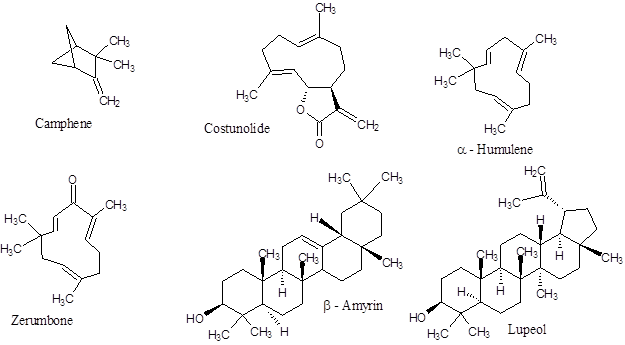
Papaverine is an opium alkaloid but synthesized in it also. The compound is often used to treat erectile dysfunction. In addition, it exhibits strong analgesic and anti-spasmodic effects. It is an inhibitor of phosphodiesterase – 4 & 10. The later type resides only in the brain. Tigogenin is a steroidal saponin that can prevent osteoporosis and shows potent anti-diabetic properties. Dioscin is also a steroidal saponin. It induces apoptosis in cancer cells including hepatic and pancreatic carcinoma. Gracillin, another steroidal saponin has powerful anticancer property. β – Sitosterol, widely known phyto-sterol is the precursor of various anabolic steroids. It has a role in reducing blood cholesterol and used in treating benign prostate hyperplasia (BPH). Zerumbone which is a sesquiterpenoid cyclic ketone synthesized in the plant by the oxidation of α – Humulene catalyzed by the enzyme, Zerumbone synthase using NAD+. This sesquiterpene shows strong anti-oxidant, anti-inflammatory and anticancer property. β – Amyrin imposes anti-inflammatory and antinociceptive effect. The persistent nociception occurs due to the activation of cannabinoid receptors (CB1 & CB2) also owing to the inhibition of generations of cytokines, NF – κβ, CREB and COX – 2. Another well-known pentacyclic triterpenoid Lupeol also plays a series of biological role. It acts as anti-inflammatory, anti-microbial, anti-proliferative, anti-invasive, anti-diabetic, anti-angiogenic and cholesterol reducing agent. It can also efficiently heal wound, helps lowering cardio-vascular and kidney diseases along with rheumatic arthritis. Costunolide is the other sesquiterpene lactone that shows numerous physiological effects as an anticancer, anti-inflammatory, anti-viral, anti-mycobacterial agent. Additionally, it shows potent inhibitory action on telomerase action and exerts apoptosis on numerous human tumor cell lines.
Pharmacological role: The folk use of C speciosus deserves mechanistic interpretations that compels to search for its pharmacological effect in health. Interestingly, it has been noted that ways of extractions make large differences regarding the degree of pharmacological / medicinal actions reported in frequent instances, since extractable molecules differ in solubility towards the solvents owing to its polarity variation. Below is the few pharmacological role of C speciosus.
Anti-oxidant effect – Phenolics, flavonoids and several others within C speciosus provide protections against the hazardous role of naturally generated ROS by scavenging or chelating the metal ions involved during the adversarial role. The methanolic, ethanolic and chloroform extracts of roots, leaves, stems and segments of rhizomes of C speciosus indicate great antioxidant effect, particularly, if extracted by using the methanol. The high solubility of glycosides, tri-terpenoids, flavonoids, tannins and steroids are considered to be responsible for antioxidant role, noticed also in the vivo studies. The majority of underlying components are identified. Each one individually shows the anti-oxidant property but no synergism is yet recorded for the mix. The effect is only seen as additive.
Anti-diabetic action – The anti-diabetic role of C speciosus is impressive as well as multifaceted. The effect has been identified to be due to the presence of Costunolide and other sesquiterpene lactones. Among them Costunolide is noticed to be the most prominent one. The compound(s) stimulates pancreatic β – cells helping secrete Insulin subsequently inhibiting the expression of NOS thereby assisting to regenerate the β – cells also. The oral administration of crude C speciosus extract to Streptozotocin (STZ) induced diabetic rats is seen to normalize the plasma Insulin and C-peptide levels. Additionally, the expression of Insulin, Insulin receptor, Glucokinase, Pyruvate kinase and Succinate dehydrogenase and glucose transporting protein are also promoted. The effect is somewhat comparable to Glibenclamide treated animals.
Further the extract shows inhibitory effect on α – amylase and α – glucosidase enzymes expectedly delaying carbohydrate digestion and subsequent glucose absorption in the body. In that way, the event lowers the post-prandial elevation of blood glucose therefore decreasing the glycation of plasma proteins which is considered beneficial for health.
As per additional assistance, the extract helps expression of intestinal monosaccharide transporter genes and gluconeogenic enzymes also furthering the ability to regenerate β – cells of pancreas for maintaining the normoglycemic effect.
Anti- cancer effect – The anti-cancer effect of chemo-therapeutic agents is normally exerted through cytotoxicity by attacking the specific molecular targets involved in the growth of cancers. The identifiable components are cyclic sesquiterpene lactones. Amon those Costunolide is seen highly effective thus used as regular medication in the cancer therapy. Costunolide arrests the cell cycle at G2/M phase of human breast carcinoma, MDA-MB-231 and MCF – 7 cell lines by altering the expression of cell cycle regulators (Cyclin D1, D3, and CDK – 4 & 6 and others). It downregulates the over expression of NF – κβ subunits p65, 52 and 100 in those cells. The compound enables to lower the viability by inducing apoptosis (IC50 ~ 40 µg) by activating Caspase – 3 and Caspase – 9). The other active component Diosgenin shows similar apoptotic role when tested on hepatocellular carcinoma, HepG2 cells (IC50 ~ 32 µg / ml). It is much active (IC50 ~ 11µg / ml) than Costunolide in the case of MCF-7 cell lines. Additionally, it increases the level of death receptor – 4 (DR4) and Caspase – 3. Interestingly, C speciosus shows no adverse effects on normal cells.
Anti-inflammatory effect – Scores of studies regarding the inflammatory role of C speciosus have been reported following the traditional uses at past and present. The recent scientific assessment by numerous laboratory investigations further confirms the fact that C speciosus is considerably effective in treating inflammation, rheumatism, fever and bronchitis. Once again, the most potent compound identified is Costunolide which attenuates the effect of TNF – α, IL, IL-6, iNOS and COX – 2 through the inhibition of NF – κβ and mitogen activated protein kinase pathways. The n- hexane – chloroform soluble matters of methanolic extract of rhizome shows several powerful biological compounds eg, 22, 23 – dihydro-spinasterone, Dehydro costus lactone, Stigmasterol, Arbusculin –A, Santamarine, and Reynosin. They considerably reduce the production level of IL-1 β, IL – 6, TNF – α, PGE2, LOX – 5 and COX – 2. These effects signify that the plant is superbly effective in regulating any inflammatory diseases which has been established by using both in vivo and in vitro models. Most of the sesquiterpene lactones provide good anti-inflammatory effect and additionally the presence of sterols synergize it further.
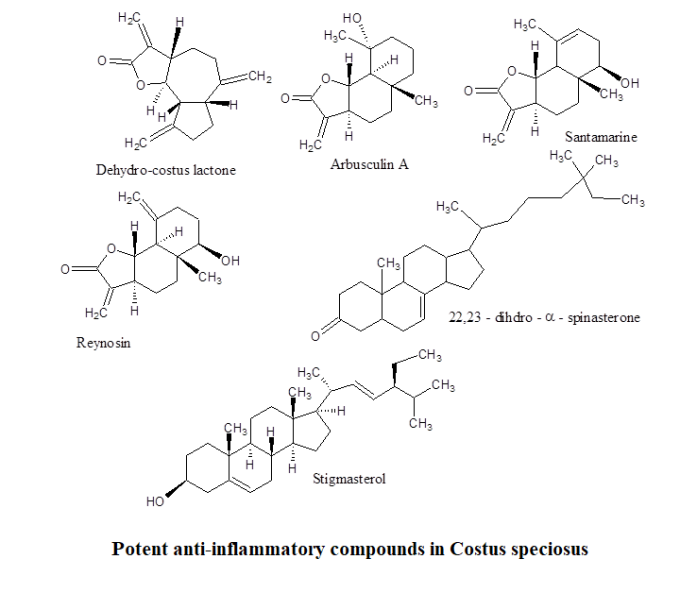
Hypolipidemic effect – In this context, the active compound exerting Hypolipidemic effect is also Costunolide. The incidence of hyperlipidemia causing high concentration of lipid in circulation occurs largely within the diabetic patients, primarily due to the deficiency of Insulin. Under the deficient situation, fatty acids liberated from the adipose tissue accumulates in plasma causing hyperlipidemia. It is noticed that Costunolide can significantly decrease the total serum cholesterol, LDL – cholesterol and triglycerides. Simultaneously, serum insulin and HDL – cholesterol levels are substantially enhanced. The effect is due to the stimulated secretion of Insulin from β – cells by Costunolide while inhibiting the expression of NOS. Identical behavior is noticed by Eremanthin, another sesquiterpene lactone from C speciosus. In addition, other components of C speciosus impose different effects regarding lipid digestibility by enhancing the expression of fatty acid transporter gene within intestinal cells.
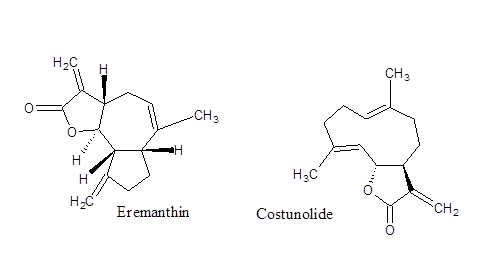
Hepato-protective effect – The rise of marker enzyme levels in plasma, like Aspartate amino-transferase (AST), Alanine aminotransferase (ALT), Lactate dehydrogenase (LDH), Alkaline phosphatase (ALP), Acid phosphatase (ACP) including the bile pigment, Bilirubin due to the leakage from liver indicates hepatic disorders under any circumstances. The oral administration of C speciosus extract brings that to the normal level. The effect is seemingly better than the drug Silymarin (a racemic mixture of Silibinin-A & B) widely known plant flavonoids, available commercially. Numerous studies have convinced that C speciosus enables to protect liver from the inflammation and injuries by drugs or any toxic products.
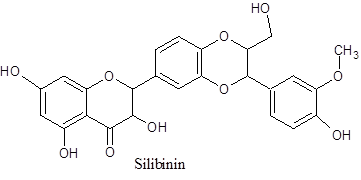
Anti-microbial effect – The extract of leaves and rhizomes exhibits antibacterial and antifungal actions. It is also seen effective against several viral infections like influenza, viral hepatitis and human immune-deficiency viruses.
Adaptogenic actions – The function of an adaptogen is to exhibit anti-depressive, anxiolytic, nootropic and anti-fatigue also CNS stimulating actions in brain. In this context, the mechanism involved regarding the extract of C speciosus is noticed to reduce the stress induced rise of Serotonin (5 – hydroxy tryptamine) and 5 – Hydroxy Indole acetic acid (5-HIAA) within brain neurons which prevents the alarm system by provoking the increment. In that way, the extract possibly exerts the anti-depressant effect. Additionally, as per its other folk use, C speciosus is successfully used against the headaches. The underlying mechanism or any particular active ingredients is still left unknown.
Antispasmodic and erectile function effect – The presence of alkaloid, Papaverine is identified to be the liable factor for those actions. The extract lowers vaso-spasm and helps penile erection by allowing the blood flow to the organ thus acts as a smooth muscle relaxant while also behaving as an inhibitor of Phosphodiesterase – 4 & 10 A inhibitor, causing the rise of intracellular cAMP level. It also has direct effect on the Calcium channel. It also acts an anti-psychotic drug.
Anti-acetylcholinesterase effect – The extract has anti-acetylcholinesterase property although no specific alkaloids or others have been identified yet. The extract is therefore used for treating Glaucoma. It also helps patients suffering from Parkinson or Myasthenia gravis and rapid eye movement sleep within autistic children.
Toxicological effect – No specific data is so far available regarding the use of any parts of C speciosus. Versatile tests on laboratory animals even at a high dose of extract (~ 1200 mg / Kg / day) on Wistar rats or mice for 3 months exhibits no significant level of toxicity in any organs except the lowering of cholesterol and glucose levels in plasma.